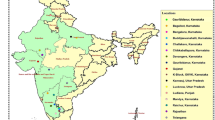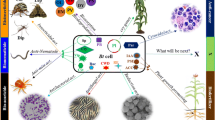Abstract
Fusarium verticillioides laboratory isolates resistant to carbendazim were readily obtained after mutagenesis with UV-irradiation. Three resistant phenotypes that included highly (HR, Resistant factors>30), moderately (MR, Rf: 14–25) and low (LR, Rf: 2–5) resistant isolates to carbendazim were identified by fungitoxicity tests in vitro. Mutant isolates were simultaneously resistant to thiabendazole and benomyl but not to the also tubulin-blocking fungicides diethofencarb and zoxamide. No cross resistance relationship was found between carbendazim and fungicides with different modes of action such as the dicarboximide iprodione, the QoI pyraclostrobin, the imidazole prochloraz, the triazoles flusilazole and epoxiconazole. Mutation(s) for resistance to benzimidazoles did not significantly affect mycelial growth rate whereas sporulation and pathogenicity were adversely affected in most of the resistant mutants. Moreover, low temperatures suppressed the expression of carbendazim-resistance in all resistant phenotypes. Most mutant isolates produced Fumonisin B1 in similar or less quantities than the wild-type isolate both in vitro and in vivo in the absence of carbendazim with the exception of one HR isolate which had up to 3-fold increased FB1 production. Sub lethal doses of carbendazim in the growth medium in vitro resulted in a significant reduction in FB1 levels in all cases even though most mutant isolates produced higher FB1 quantities than the wild type. A significant correlation was found between F. verticillioides sporulation and FB1 production on maize seeds. The potential risk of food and feed contamination by FB1 producing F. verticillioides isolates resistant to benzimidazoles and implications on resistance management strategies are discussed.



Similar content being viewed by others
References
Blacutt, A. A., Gold, S. E., Voss, K. A., Gao, M., & Glenn, A. E. (2018). Fusarium verticillioides: Advancements in understanding the toxicity, virulence, and niche adaptations of a model mycotoxigenic pathogen of maize. Phytopathology, 108, 312–326.
Bottalico, A., & Perrone, G. (2002). Toxigenic Fusarium species and mycotoxins associated with head blight in small ceeals in Europe. European Journal of Plant Pathology, 108, 611–624.
Chen, Y., Wang, J. X., Zhou, M. G., Chen, J. C., & Yuan, S. K. (2007). Vegetative compatibility of Fusarium graminearum isolates and genetic study on their carbendazim-resistance recombination in China. Phytopathology, 97, 1584–1589.
Cruz, A., Marín, P., Magan, N., & González-Jaén, M. T. (2014). Combined effects of benomyl and environmental factors on growth and expression of the fumonisin biosynthetic genes FUM1 and FUM19 by Fusarium verticillioides. International Journal of Food Microbiology, 191, 17–23.
D’Mello, J. P. F., Macdonald, A. M. C., & Briere, L. (2000). Mycotoxin production in a carbendazim-resistant strain of Fusarium sporotrichioides. Mycotoxin Research, 16, 101–111.
Deising, H. B., Reimann, S., & Pascholati, S. F. (2008). Mechanisms and significance of fungicide resistance. Brazilian Journal of Microbiology, 39, 286–295.
Del Sorbo, G., Schoonbeek, H.-J., & De Waard, M. A. (2000). Fungal transporters involved in efflux of natural toxic compounds and fungicides. Fungal Genetics and Biology, 30, 1–15.
Delp, C. J. (1987). Benzimidazole and related fungicides. In H. Lyr (Ed.), Modern selective fungicides - properties, applications, mechanisms of action (pp. 233–244). Harlow: Longman Scientific & Technical.
Doohan, F. M., Brennan, J., & Cooke, B. M. (2003). Influence of climatic factors in Fusarium species pathogenic to cereals. European Journal of Plant Pathology, 109, 755–768.
European Comission (EC), Commission Regulation (EU). (2011). No 420/2011 of 29 April 2011 amending Regulation (EC) No 1881/2006 setting maximum levels for certain contaminants in foodstuffs. Off. J. Eur. Union.
FRAC. (2007). Fungicide resistance in crop pathogens: How can it be managed? http://www.frac.info/docs/default-source/publications/monographs/monograph-1.pdf?sfvrsnΌ769d419a_8. Accessed July 2019.
Friedberg, E. (2003). DNA damage and repair. Nature, 421, 436–440. https://doi.org/10.1038/nature01408.
Georgopoulos S. G. (1987). The development of fungicide resistance. In Wolfe M. S., & Caten C. E. (Eds.), Populations of plant pathogens: their dynamics and genetics (pp. 239–251). Oxford: Blackwell Scientific Publications.
IARC. (1993). Monographs on the evaluation of carcinogenic risks to humans. Vol. 56. Some naturally occurring substance: Food items and constituents, heterocyclic aromatic amines and mycotoxins (p. 599). Lyon: IARC.
Ivic, D., Sever, Z., & Kuzmanovska, B. (2011). In vitro sensitivity of Fusarium graminearum, F. avenaceum and F. verticillioides to carbendazim, tebuconazole, flutriafol, metconazole and prochloraz. Pesticidi i Fitomedicina, 26, 35–42.
Logrieco, A., Mule, G., Moretti, A., & Bottalico, A. (2002). Toxigenic Fusarium species and mycotoxins associated with maize ear rot in Europe. European Journal of Plant Pathology, 108, 597–609.
Ma, Z., & Michailides, T. J. (2005). Advances in understanding molecular mechanisms of fungicide resistance and molecular detection of resistant genotypes in phytopathogenic fungi. Crop Protection, 24, 853–863.
Ma, Z., Yoshimura, M., & Michaelides, T. J. (2003). Identification and characteriziation of benzimidazole resistance in Monilinia fruticola from stone fruit orchards in California. Applied and Environmental Microbiology, 69, 7145–7152.
Magnucka, E. G., Suzuki, Y., Pietr, S. J., Kozubek, A., & Zarnowski, R. (2007). Action of benzimidazole fungicides on resorcinolic lipid metabolism in rye seedlings depends on thermal and light growth conditions. Pesticide Biochemistry and Physiology, 88, 219–225.
Malandrakis, A. A., Markoglou, A. N., Konstantinou, S., Doukas, E. G., Kalampokis, J. F., & Karaoglanidis, G. S. (2013). Molecular characterization, fitness and mycotoxin production of benzimidazole- resistant isolates of Penicillium expansum. International Journal of Food Microbiology, 162, 237–244.
Marasas, W. F. O. (2001). Discovery and occurrence of the fumonisins: A historical perspective. Environmental Health Perspectives, 109(SUPPL. 2), 239–243.
Marín, P., de Ory, A., Cruz, A., Magan, N., & González-Jaén, M. T. (2013). Potential effects of environmental conditions on the efficiency of the antifungal tebuconazole controlling Fusarium verticillioides and Fusarium proliferatum growth rate and fumonisin biosynthesis. International Journal of Food Microbiology, 165, 251–258.
Markoglou, A. N., Doukas, E. G., & Ziogas, B. N. (2008). Phenylpyrrole-resistance and aflatoxin production in Aspergillus parasiticus Speare. International Journal of Food Microbiology, 127, 268–275.
Merrill Jr., A. H., Sullards, M. C., Wang, E., Voss, K. A., & Riley, R. T. (2001). Sphingolipid metabolism: Roles in signal transduction and disruption by Fumonisins. Environmental Health Perspectives, 109(suplement 2), 283–289.
Mesterhazy. (1982). Resistance of corn to Fusarium ear rot and its relation to seedling resistance. Phytopathologische Zeitschrift, 103, 218–231.
Miguel, T. Á., Bordini, J. G., Saito, G. H., Andrade, C. G. T. J., Ono, M. A., Hirooka, E. Y., Vizoni, É., & Ono, E. Y. S. (2015). Effect of fungicide on Fusarium verticillioides mycelial morphology and fumonisin B1 production. Brazilian Journal of Microbiology, 46, 293–299. https://doi.org/10.1590/S1517-838246120120383.
Munkvold, G. P., & Carlton, W. M. (1997). Influence of inoculation method on systemic Fusarium moniliforme infection of maize plants grown from infected seeds. Plant Disease, 81, 211–216.
Oren, L., Ezrati, S., Cohen, D., & Sharon, A. (2003). Early events in the Fusarium verticillioides-maize interaction characterized by using green fluorescent protein-expressing transgenic isolate. Applied and Environmental Microbiology, 69, 1695–1701.
Sevastos, A., Markoglou, A., Labrou, N. E., Flouri, F., & Malandrakis, A. (2016). Molecular characterization, fitness and mycotoxin production of Fusarium graminearum laboratory strains resistant to benzimidazoles. Pesticide Biochemistry and Physiology, 128, 1–9.
Sevastos, A., Labrou, N. E., Flouri, F., & Malandrakis, A. (2017). Glutathione transferase-mediated benzimidazole-resistance in Fusarium graminearum. Pesticide Biochemistry and Physiology, 141, 23–28.
Subhani, M. N., Sahi, S. T., Hussain, S., Ali, A., Iqbal, J., & Hameed, K. (2011). Evaluation of various fungicides for the control of gram wilt caused by Fusarium oxysporum f.sp. ciceris. African Journal of Agricultural Research, 6, 4555–4455.
Tenreiro, S., Fernandes, A. R., & Sa-Correia, I. (2001). Transcriptional activation of FLR1 gene during Saccharomyces cerevisiae adaptation to growth with benomyl: Role of Yap1p and Pdr3p. Biochemical and Biophysical Research Communications, 280, 216–222.
Voss, K. A., Smith, G. W., & Haschek, W. M. (2007). Fumonisins: Toxicokinetics, mechanism of action and toxicity. Animal Feed Science and Technology, 137, 299–325.
Williams, L. D., Glenn, A. E., Zimeri, A. M., Bacon, C. W., Smith, M. A., & Riley, R. T. (2007). Fumonisin disruption of ceramide biosynthesis in maize roots and the effects on plant development and Fusarium verticillioides-induced seedling disease. Journal of Agricultural and Food Chemistry, 55, 2937–2946.
Xu, S., Wang, J., Wang, H., Bao, Y., Li, Y., Govindaraju, M., Yao, W., Chen, B., & Zhang, M. (2019). Molecular characterization of carbendazim resistance of Fusarium species complex that causes sugarcane pokkah boeng disease. BMC Genomics, 20, art. no. 115. https://doi.org/10.1186/s12864-019-5479-6.
Yan, K., & Dickman, M. B. (1996). Isolation of a β-tubulin gene from Fusarium moniliforme that confers cold-sensitive benomyl resistance. Applied and Environmental Microbiology, 62, 3053–3056.
Yates, I. E., Bacon, C. W., & Hinton, D. M. (1997). Effects of Endophytic infection by Fusarium moniliforme on corn growth and cellular morphology. Plant Diease, 81, 723–728.
Zhang, Y. J., Yu, J. J., Zhang, Y. N., Zhang, X., Cheng, C. J., Wang, J. X., Hollomon, D. W., Fan, P. S., & Zhou, M. G. (2009). Effect of carbendazim resistance on trichothecene production and aggressiveness of Fusarium graminearum. Molecular Plant-Microbe Interactions, 22, 1143–1150.
Funding
His research did not receive any specific grant from funding agencies in the public, commercial, or not-for-profit sectors.
Author information
Authors and Affiliations
Corresponding author
Ethics declarations
Ethical approval
This article does not contain any studies with human participants or animals performed by any of the authors.
Conflict of interest
Author Anastasios Malandrakis declares that he has no conflict of interest. Author Dimitra Karamanou declares that she has no conflict of interest. Author Fotini Flouri declares that she has no conflict of interest.
Rights and permissions
About this article
Cite this article
Malandrakis, A.A., Karamanou, D. & Flouri, F. Impact of benzimidazole resistance on fitness parameters and fumonisin B1 production in Fusarium verticillioides (Sacc) Niremberg. Eur J Plant Pathol 159, 891–902 (2021). https://doi.org/10.1007/s10658-021-02213-y
Accepted:
Published:
Issue Date:
DOI: https://doi.org/10.1007/s10658-021-02213-y




